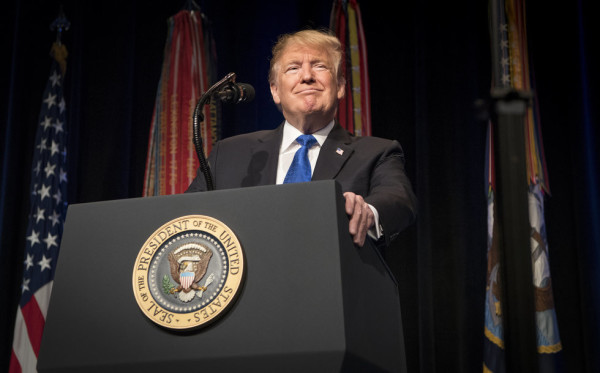

The White House’s new executive order targeting veteran suicide is a commitment long overdue, though it’s not surprising, given President Donald Trump’s loud and vocal support of our military and veterans, that he is taking up the charge.
The latest report from the VA establishes that 20 veterans a day die by suicide. This administration now owns that number and the people behind it, in ways it did not before.
The President’s Roadmap to Empower Veterans and End a National Tragedy of Suicide (PREVENTS) is a mouthful, literally and metaphorically. A massive undertaking, the pathway ahead is unclear and fraught with the opportunity to misstep. There is no one-size fits all solution for suicide. Therefore, there must be an acknowledgement of the diversity of the veteran population if any solution is to be successful.
It takes time, resources, and concentrated effort to understand the unique nature of every conflict and it will be many years before we are able to understand the full physiological and psychological impact of our recent military campaigns. To that point, we are still struggling to understand and meet the needs of our Vietnam-era veterans.
This past December, the Senate failed to pass the Blue Water Navy bill providing benefits and coverage to thousands of veterans who served off the coast of Vietnam and were likely exposed to Agent Orange, a defoliant linked to a host of cancers and diseases. Secretary of Veterans Affairs Robert Wilkie voiced his opposition based on cost and insufficient scientific evidence — not inconclusive scientific evidence, but insufficient scientific evidence. Simply, there was not enough completed research to convince some lawmakers to move forward with coverage and care.
We are facing the same critical shortfall now. Remarkably, veteran suicide rates have remained static despite numerous ‘plans of action,’ influxes of money, the creation of thousands of Veteran Service Organizations (VSOs), and legislation directed at streamlining and improving the VA.
Accordingly, the new order will give agency officials a year to develop an aggressive plan for combating veteran suicide with a particular focus on state and local community engagement.
The task force will explore a grant system which provides funds directly to local charities and city programs to provide individualized assistance to veterans. While a similar program through Housing and Urban Development (HUD) was successful in cutting veteran homelessness in half, it remains to be seen if generalizing this solution to a very different problem set will be successful.
Regardless, this push is predicated on what we know about veteran engagement with the federal system. Of the veterans who die by suicide, 70% have little or no contact with the VA. This suggests there is a gap and an opportunity to target this population through community outreach.
It’s a page taken from our counter-insurgency doctrine: engage with the local population and leverage ‘boots-on-the-ground’ to solve an asymmetric issue.
However, while the predominant focus over the past decade has been on the widespread failings of the Department of Veterans Affairs and their inability to make an impact on suicide rates, there has been little to no focus on the responsibility of VSOs in addressing the same problem. This is of particular note because the executive order seems to be pushing for partnership with these same VSOs.
Over the past 15 years, the veteran non-profit space has roared to life in historic ways. There are over 45,000 non-profits registered with the IRS that are devoted to veterans and their families. Yet, many of these entities do not measure their outcomes. Meaning, very few can definitely show their programs are having a significant or measurable impact on veteran health and well-being. Moreover, most do not track participant suicide, both because they are not beholden to the same standards of care as the VA and because there is no incentive to do so.
The same criticism Wilkie and lawmakers directed towards the Blue Water Navy bill is largely present here. However, there is hope if Wilkie’s penchant for empiricism is a hallmark of the administration’s approach to suicide and especially so if this holds true in the implementation of PREVENTS.
Yet, for the time being there remains a significant dearth of research and understanding of veteran suicide.
Anyone who argues a single solution for veteran suicide has never spent time working with or researching suicide in the military and veteran population. Today’s signing of the executive order will be the easiest piece of it all. It is a much needed first step in the right direction but we must not lose sight that we have a long way to go.
Perhaps more critically, every day delayed is another 20 lost.
Meaghan Mobbs is a clinical psychology predoctoral fellow at Columbia University, where she specializes in veteran and military issues. A West Point graduate and Afghanistan veteran, she is a George W. Bush Institute Veteran Leadership Scholar and Tillman Military Scholar. She is currently a President Trump appointee to the United States Military Academy Board of Visitors.